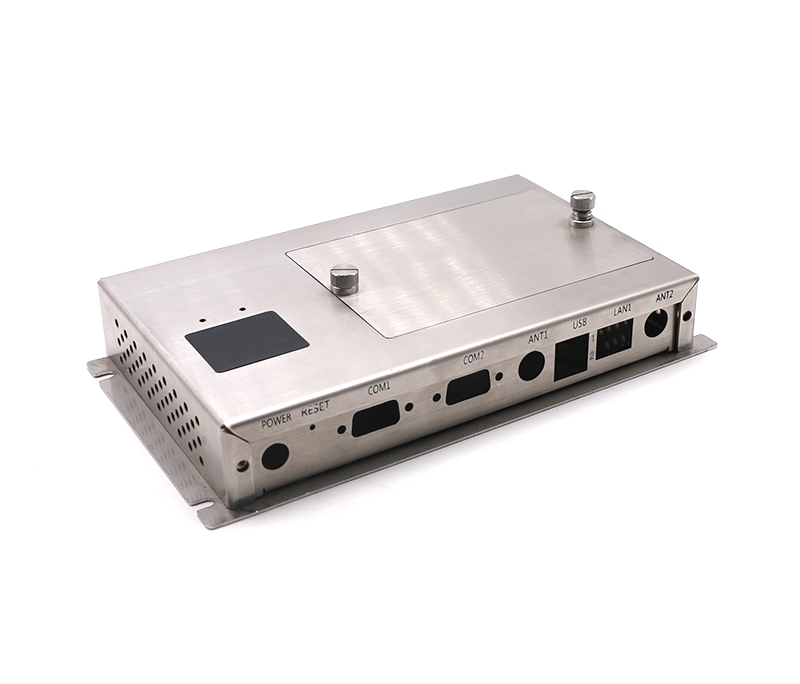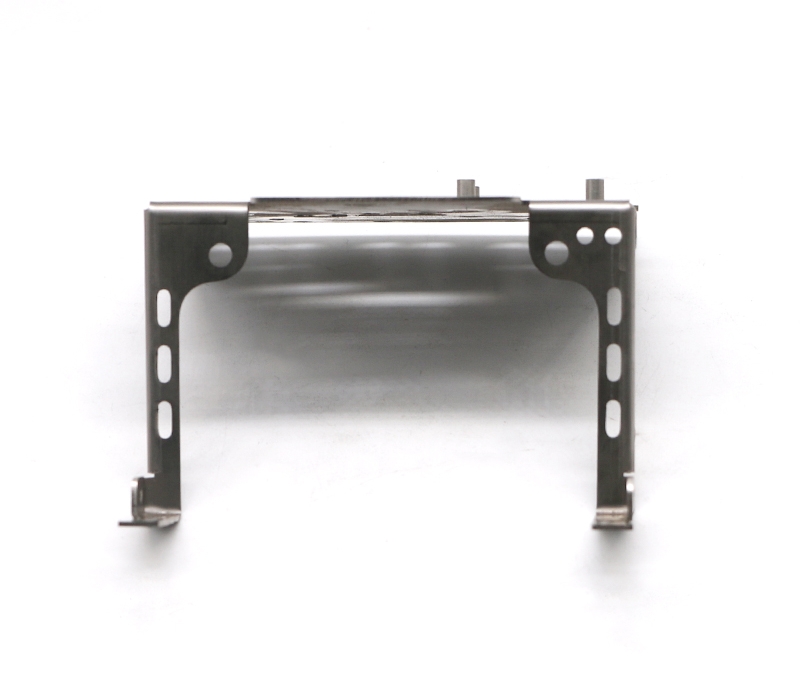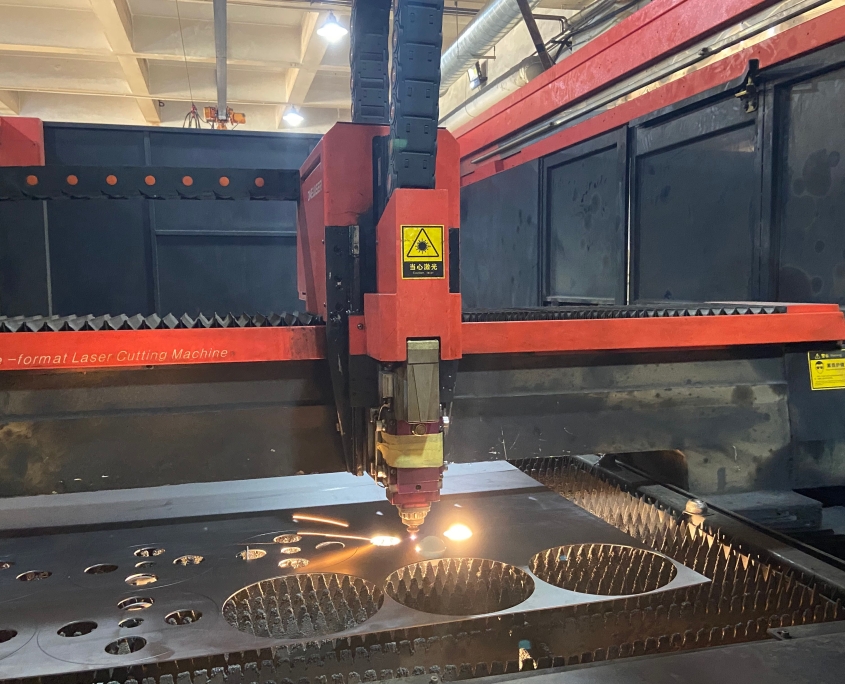What is a Sheet Metal?
Many people may not fully understand what “sheet metal” is or its crucial role across various industries. Without this knowledge, you could miss out on high-quality, precision-engineered parts essential for your project. In this article, we’ll explain what sheet metal is, explore its different types, manufacturing processes, and applications, helping you make informed decisions for your production needs.
Sheet metal is a thin, flat form of metal used in countless industries to manufacture components, structures, and parts. It is one of the basic forms used in metalworking and can be cut and bent into a variety of different shapes. Sheet metal comes in a variety of thicknesses and materials, and its manufacturing process plays an important role in producing high-precision components.
Let’s dive deeper into its properties, types, and the processes involved in its production.
What is a Sheet Metal?
Sheet metal refers to a flat, thin piece of metal that can be cut, bent, or shaped into a wide variety of products. It is an essential material in modern manufacturing due to its versatility, strength, and ability to be easily shaped into different forms. It can range from very thin sheets, such as foil, to much thicker plates, and is commonly used in industries like automotive, aerospace, electronics, and construction. Depending on the material and thickness, sheet metal can be designed to meet specific strength, weight, and corrosion resistance requirements.
How Are Sheets Made?
The process of making sheet metal begins with large metal ingots or billets, which are produced by melting raw materials. These ingots are then heated to high temperatures and passed through rolling mills in a process known as hot rolling, which reduces the thickness of the metal and increases its length. The metal is continuously fed through the rollers until it reaches the desired thickness, which can vary depending on the application and the type of metal being used. This process makes the metal easier to shape and gives it a more uniform structure. Once the metal reaches the desired thickness, it is cooled and may undergo cold rolling for a smoother finish and tighter tolerances.
After rolling, the sheet metal is typically cut into specific lengths and widths using automated machinery, such as shears or lasers, to create precise dimensions. The final product is then inspected for quality to ensure it meets industry standards, including thickness, surface finish, and strength. For materials requiring high corrosion resistance, such as stainless steel or aluminum, additional processes like galvanization or coating may be applied. Once the sheets are tested and processed, they are packaged and prepared for delivery to manufacturers who will further process them into components or finished products.
Types of Sheet Metal and Materials Used
Sheet metal can be manufactured from various materials, each selected based on the specific requirements of the application, such as strength, weight, corrosion resistance, or conductivity. Below are the commonly used types of sheet metal materials:
- Aluminum Sheet Metal: Lightweight and corrosion-resistant, aluminum is often used in automotive and aerospace industries.
- Stainless Steel Sheet Metal: Known for its strength and resistance to rust and corrosion, it is a popular choice for kitchen appliances and medical equipment.
- Copper Sheet Metal: Excellent conductivity and corrosion resistance, used in electrical components and plumbing.
- Galvanized Sheet Metal: Steel coated with zinc, offering enhanced durability and corrosion resistance, commonly used in outdoor applications like roofing.
- Mild Steel Sheet Metal: A cost-effective option, mild steel is easy to shape and weld. It is frequently used in automotive panels, industrial machinery, and construction components. Its strength and machinability make it ideal for high-volume manufacturing.
- Titanium Sheet Metal: Lightweight, strong, and corrosion-resistant, titanium is used in aerospace, medical implants, and high-performance automotive components. Although more expensive, its properties make it irreplaceable for specialized applications.
- Brass and Bronze Sheet Metal: Both materials offer excellent corrosion resistance and an attractive appearance, making them ideal for decorative purposes, musical instruments, and marine components. Brass also offers good machinability and is often used in electrical connectors and fittings.
Why Understanding Measurement Units Matters?
Millimetres, Mils & Gauge: Understanding Sheet Metal Thickness
Understanding how sheet metal thickness is measured is essential, as different systems are used depending on the region and industry. Accurate thickness measurement ensures that the material meets the requirements of a specific application. Here’s a closer look at the most common units of measurement:
- Millimeters (mm): Used in most countries as the standard unit for measuring sheet thickness. This straightforward unit makes it easy to measure and compare sheet metal thickness across various materials and applications. For example, sheet metal used in automotive panels might range from 0.5 mm to 2 mm thick.
- Mils: A mil is a unit used predominantly in the U.S., with one mil equaling one-thousandth of an inch (0.001 inch). This unit is commonly used in industries like electronics and HVAC, where precision is vital. For instance, a typical aluminum foil might measure around 1 mil, while thicker sheet metal for construction could range up to 50 mils.
- Gauge: Gauge is a non-linear measurement system used to denote sheet metal thickness, with higher gauge numbers indicating thinner material. For example, a 24-gauge steel sheet is thinner than a 12-gauge one. Gauge measurements vary by material type; for instance, a 10-gauge aluminum sheet is not the same thickness as a 10-gauge steel sheet.
Foil, Sheet, and Plate: What’s the Difference?
Foils, sheets, and plates all fall under the broad category of flat metal products, but their key distinction lies in their thickness. Understanding the differences is crucial for selecting the right material for specific applications:
- Foil: Extremely thin metal, typically less than 0.2 mm thick, commonly used in packaging and insulation.
- Sheet: Ranges in thickness from 0.2 mm to around 6 mm, used in most manufacturing processes.
- Plate: Thicker than sheet metal, often over 6 mm, used in heavy-duty applications like structural supports or large machinery.
While these categories are defined by thickness, the choice between foil, sheet, and plate depends on the specific needs of the project, such as the required strength, flexibility, weight, and processing methods. Their shared characteristics, including durability and versatility, make them indispensable in manufacturing and engineering.
Standard Sizes of Sheet Metal
Sheet metal comes in a variety of standard sizes to accommodate different needs. Common sizes include:
- Standard Lengths: The most commonly available lengths are 4 feet (1.22 m), 8 feet (2.44 m), and 12 feet (3.66 m). Longer lengths may be available for specialized applications, but standard lengths are preferred for ease of handling and compatibility with most fabrication equipment.
- Standard Widths: Typical widths range from 36 inches (0.91 m) to 60 inches (1.52 m). Wider sheets can be custom-ordered for specific needs, though they may require specialized machinery for processing.
- Custom Sizes: Many suppliers offer custom lengths and widths to accommodate unique requirements, ensuring that the sheet metal integrates seamlessly into the project without additional cutting or adjustments.
How Wide is Sheet Metal?
Sheet metal is typically available in standard widths ranging from 36 inches to 60 inches, but these dimensions can vary depending on the manufacturer and the specific requirements of the project. For instance, some industries may require wider sheets for large-scale production, while others may opt for narrower widths for more precision-oriented applications. The width of the sheet metal is often determined by several factors, including the intended application, machine capacity, and cost considerations.
Standard Sheet Metal Measurements
The most common sheet metal measurements for various applications are:
- Thickness:
- Thin sheets: 0.2 mm to 0.5 mm, used for applications like automotive body panels and electronics enclosures.
- Medium sheets: 0.5 mm to 6 mm, common for construction, HVAC systems, and industrial machinery.
- Heavy sheets: 6 mm to 25 mm, often referred to as plates, are utilized in structural and heavy-duty applications such as shipbuilding and machinery bases.
- Length and Width: These dimensions vary depending on industry requirements, but most general applications rely on standardized sizes to simplify logistics and reduce lead times. Custom sizes are available for niche industries like aerospace or specialized construction projects.
Standard Sheet Metal Thickness
Sheet metal thickness typically ranges from 0.2 mm (thin foil) to 25 mm (heavy plate). For most general applications, sheet metal thickness falls between 0.5 mm and 6 mm. Understanding the thickness range and its relation to strength, flexibility, and weight is crucial in selecting the right material for your needs.
Forming Processes for Sheet Metal
Forming processes for sheet metal are critical steps in manufacturing, as they transform flat sheets into functional and precise components used across various industries. These processes use a combination of heat, pressure, and cutting tools to shape the metal according to specific requirements. Here the common forming methods:
1. Stamping:
2. Bending:
3. Shearing:
4. Punching:
5. Other Forming Processes
Sheet Metal Tools and Equipment
A variety of specialized tools and equipment are essential for working with sheet metal, each designed for specific tasks to ensure efficiency and precision. Here’s an overview of the key tools commonly used in sheet metal processing:
- Sheet Metal Bender: This tool is used for bending sheet metal into precise angles and shapes. It is crucial for creating complex, custom designs in industries like automotive and construction.
- Sheet Metal Cutter: A versatile tool for cutting sheet metal to specific sizes. It can be used in various applications, from simple cuts to more intricate shapes.
- Sheet Metal Shear: Ideal for cutting large sheets of metal in straight lines, a sheet metal shear provides clean, straight cuts without distortion.
- Metal Sheet Metal Brake: This tool is used to create precise bends and folds in sheet metal, making it essential for producing parts with uniform bends and angles.
- Sheet Metal Hammer: Often used for shaping and forming metal sheets, this hammer helps refine the shape and smooth the surface of sheet metal, particularly in manual or finishing stages.
In addition to these, other specialized tools like sheet metal rollers, hydraulic presses, and metal forming machines are also commonly used for more complex shaping, cutting, and joining tasks. Using the right tools ensures that sheet metal is processed efficiently and with the necessary precision for each specific project, ensuring high-quality results. Proper tool maintenance is also important to prevent wear and maintain optimal performance.
Hot-Rolled vs Cold-Rolled Sheet Metal
What is Sheet Metal Used For?
Sheet metal’s versatility and durability make it essential in various industries. Here are some key applications where sheet metal is widely used:
- Automotive Manufacturing: Sheet metal is fundamental in the automotive industry, where it’s used for making car bodies, engine components, chassis, and structural supports. The lightweight yet strong properties of sheet metal help improve vehicle performance and fuel efficiency, while its ability to be easily molded and shaped allows for the production of complex parts like panels and brackets.
- Medical Equipment: In the medical field, sheet metal is used to create surgical instruments, diagnostic machines, hospital furniture, and medical device casings. The material’s strength, cleanliness, and resistance to corrosion make it ideal for producing high-precision and sterilizable components for medical applications, including surgical trays, MRI machines, and oxygen tanks.
- Electronics: Sheet metal is commonly used to create enclosures and housings for electronic devices such as computers, phones, televisions, and electrical components. Its ability to provide both protection and heat dissipation makes it critical for safeguarding sensitive electronics from physical damage and overheating. Additionally, metal enclosures can shield devices from electromagnetic interference (EMI).
- Construction: In construction, sheet metal plays a vital role in building infrastructure. It is used for roofing, siding, gutter systems, and exterior cladding. Sheet metal is also utilized for creating structural components such as beams, columns, and supports. Its durability, weather resistance, and versatility make it a preferred material for long-lasting and low-maintenance construction projects.
- Aerospace: Sheet metal is extensively used in the aerospace industry for manufacturing airplane fuselages, wings, and other critical components. Its lightweight yet strong characteristics help reduce aircraft weight while maintaining structural integrity. Titanium, aluminum, and stainless steel are commonly used metals in aerospace sheet metal applications due to their high strength-to-weight ratio and corrosion resistance.
- Energy and Power Generation: In the energy sector, sheet metal is employed in manufacturing parts for power plants, turbines, and heat exchangers. Its thermal resistance and strength make it well-suited for applications that involve high heat and pressure, such as in nuclear, gas, and renewable energy industries.
- Consumer Goods: Many everyday items, from kitchen appliances to furniture, rely on sheet metal for their structure and design. Household items like refrigerators, washing machines, and cookware are often made from stainless steel or aluminum sheet metal due to their ease of cleaning, durability, and aesthetic appeal.
How to Do Staking in Sheet Metal?
Staking in sheet metal involves joining two metal parts by deforming the material with a staking tool to create a secure connection. This method does not require welding, making it ideal for assembling parts that need to be permanently attached without heat distortion. Commonly used in automotive, electronics, and other industries, staking ensures strong, precise connections without altering material properties. The process uses mechanical or hydraulic presses to create raised edges or flanges that hold the pieces together securely.
What are the Advantages and Challenges of Working with Sheet Metal?
Working with sheet metal offers numerous benefits, but also presents several challenges that manufacturers must consider. Understanding both the advantages and potential difficulties can help ensure a smooth and efficient production process. Let’s explore the key benefits and obstacles you may encounter when working with sheet metal.
Advantages:
- Lightweight and Strong: Sheet metal offers an excellent strength-to-weight ratio, making it ideal for industries such as aerospace, automotive, and construction, where both durability and weight reduction are essential.
- Versatility: It can be easily shaped into complex forms through processes like stamping, bending, and punching, allowing for a wide range of design possibilities.
- Cost-effective for Mass Production: Due to its efficiency in high-volume manufacturing, sheet metal is a cost-effective choice for producing large quantities of parts quickly and economically.
- Durability: Materials like stainless steel and aluminum offer excellent resistance to corrosion, making them suitable for use in harsh or outdoor environments.
- Recyclable: Sheet metal can often be recycled, making it an environmentally sustainable material for many applications.
Challenges:
- Precision Requirements: Working with sheet metal requires high precision in cutting, bending, and joining processes to avoid errors that could lead to production delays or part failure.
- Material Waste: If not properly planned, cutting and shaping sheet metal can result in material waste, especially when dealing with intricate designs or large sheets.
- Handling Difficulties: Large sheets of metal can be challenging to handle without the proper equipment, increasing the risk of accidents or damage during the manufacturing process.
- Tool Wear: Sheet metal cutting and forming tools can wear out quickly due to the force required to manipulate the metal, necessitating regular maintenance or replacement to maintain production efficiency.
How to Choose the Right Sheet Metal for Your Project?
In Conclusion
In this article, we explored what sheet metal is, its different types, thickness measurements, manufacturing processes, and applications. By understanding sheet metal’s properties, you can make informed decisions for your production and engineering needs.
For more information on sheet metal, please visit: https://vmtcnc.com/custom-sheet-metal-fabrication-services/
Frequently Asked Questions About Sheet Metal
What Is a Sheet Metal Brake?
A sheet metal brake is a tool used to bend, fold, or shape sheet metal into precise angles and shapes. It typically consists of a flat surface, a clamping mechanism, and a bending arm to create bends at specific angles, commonly used in metalworking and fabrication.
What Is a Sheet Metal Screw?
A sheet metal screw is a fastener designed for attaching metal sheets together. It features a sharp, self-tapping thread that allows it to be driven directly into the material without the need for a pre-drilled hole, making it ideal for securing thin metal parts.
How Thick Is 18 GA Steel?
18-gauge steel has a thickness of 0.0478 inches (1.214 mm). The gauge system measures the thickness of the steel, and the lower the number, the thicker the material.
Can You Fume Sheet Metal with Silver Similar to Glass?
No, fuming sheet metal with silver is not typically done in the same way as glass. Fuming usually refers to a process of creating a thin coating or layer of material by exposing it to fumes in a controlled environment. While silver can be used for coatings, it’s not a common practice for sheet metal like it is with glass.
Is a Sheet Metal Worker the Same as a Welder?
No, a sheet metal worker and a welder have different roles. A sheet metal worker specializes in cutting, shaping, and assembling metal sheets, while a welder focuses on joining metal parts through the application of heat and filler material. The two roles can overlap, but they have distinct skills.






